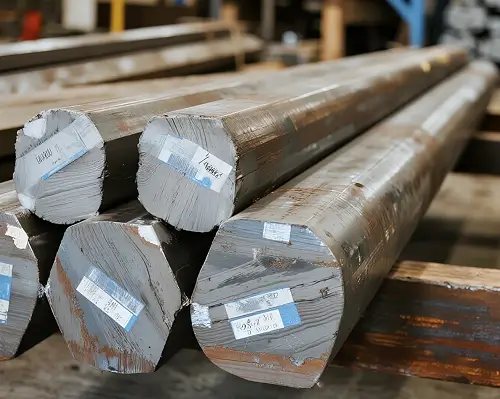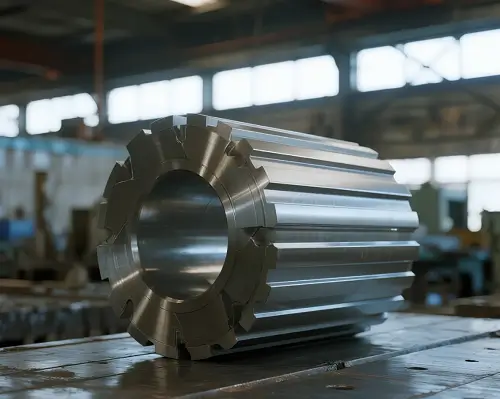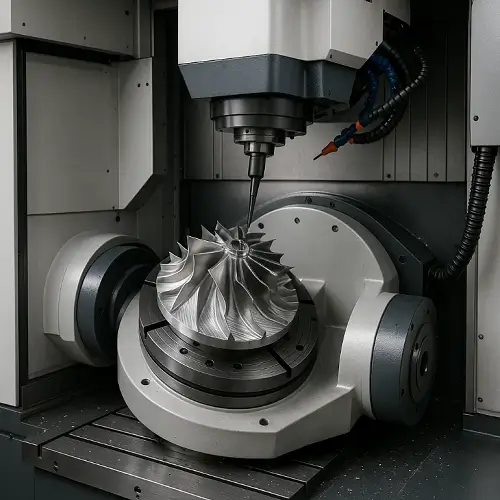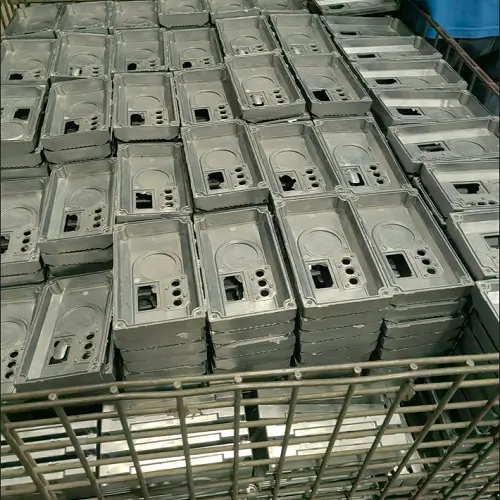Steel remains the most widely used material across numerous industries—from automotive manufacturing to industrial machinery, and even simple structural components like columns. Different steel grades dominate various applications based on their performance and cost-effectiveness. When selecting suitable materials for CNC machining, it is essential to consider these factors carefully. Among common choices, 1018 steel and 4140 steel stand out, each with unique properties and applications. Understanding their differences can save time, reduce costs, and enhance the performance of your machined parts. This article provides a detailed overview of both steels, their advantages and disadvantages, typical applications, and most importantly, a direct comparison to help you make an informed choice.

What Is 1018 Steel?
1018 steel is a commonly used low-carbon steel with approximately 0.18% carbon content and 0.6–0.9% manganese. It achieves a good balance between strength, toughness, and machinability. Although its strength and hardness are lower than those of alloy steels or high-carbon steels, 1018 steel excels in machinability and weldability while maintaining a low cost. Due to these attributes, it is widely used for structural components, shafts, and general mechanical parts. Additionally, 1018 steel is suitable for surface hardening processes like carburizing, which improves wear resistance.
Advantages and Disadvantages of 1018 Steel
Advantages:
Excellent machinability: Easy to cut, drill, and mill with standard CNC tools.
Good weldability: Low carbon content allows welding without complex preheating or post-weld heat treatment.
Balanced ductility and toughness: Provides decent toughness and flexibility for many applications.
Cost-effective and widely available: Ideal for large-scale production of general-purpose parts.
Surface hardening capability: Can be carburized to increase surface hardness and wear resistance.
Disadvantages:
Lower strength and hardness: Not suitable for high-stress or wear-intensive applications without surface treatment.
Limited fatigue resistance: Under cyclic loading, performance is average.
Poor corrosion resistance: Requires protective coatings in corrosive environments.
What Is 4140 Steel?
4140 steel is a medium-carbon, chromium-molybdenum alloy steel containing about 0.40% carbon, 0.90% chromium, and 0.20% molybdenum. It is well-known for its high strength, toughness, wear resistance, and fatigue resistance. This steel can be supplied in annealed, normalized, or pre-hardened conditions, making it highly versatile for CNC machining of structural parts. Typical applications include gears, shafts, crankshafts, bolts, and tool holders—components that demand high load-bearing capacity and impact resistance.
Advantages and Disadvantages of 4140 Steel
Advantages:
High strength and toughness: Especially after heat treatment, suitable for parts subjected to heavy loads and impacts.
Excellent hardenability: Allows deep and uniform hardening for thick or complex parts.
Good fatigue and wear resistance: Ideal for rotating shafts and dynamic load conditions.
Machinability in annealed state: Can be machined effectively before heat treatment.
Versatile heat treatment: Quenching and tempering enable fine control over hardness and toughness balance.
Disadvantages:
Higher cost than low-carbon steels: Alloying elements increase material price.
Requires careful heat treatment: Improper processing can cause warping or cracking.
Limited corrosion resistance: Not stainless; protective coatings are necessary in corrosive environments.
Increased tool wear when hardened: Harder state demands more robust tooling and machining parameters.
Key Differences Between 1018 and 4140 Steel
| Property | 1018 Steel | 4140 Steel |
|---|---|---|
| Type | Low-carbon steel | Medium-carbon alloy steel |
| Carbon Content | ~0.18% | ~0.40% |
| Alloying Elements | Minimal (mainly manganese) | Chromium, molybdenum |
| Hardness Potential | Low (can be carburized) | High (quench and temper) |
| Strength | Moderate | High |
| Toughness | Good | Excellent |
| Machinability | Excellent | Good (annealed) |
| Weldability | Excellent | Moderate (requires pre/post-heat treatment) |
| Fatigue Resistance | Average | Superior |
| Cost | Lower | Higher |
| Common Applications | Shafts, structural parts, general machining | Gears, shafts, crankshafts, high-load components |
Chemical Composition
1018 Steel is a low-carbon steel with approximately 0.18% carbon and minor amounts of manganese. It contains minimal alloying elements, making it primarily a plain carbon steel.
4140 Steel is a medium-carbon alloy steel, containing about 0.40% carbon, along with significant amounts of chromium (around 0.9%) and molybdenum (about 0.2%). These alloying elements enhance its strength, hardenability, and toughness.
Mechanical Properties
Strength and Hardness:
4140 steel generally exhibits much higher tensile strength and hardness after heat treatment compared to 1018 steel. 1018’s strength is moderate, suitable for less demanding structural applications.
Toughness and Ductility:
4140 steel offers superior toughness and fatigue resistance, making it ideal for parts exposed to impact or cyclic loads. 1018 steel, while ductile and easy to work with, lacks this high toughness.
Machinability and Welding
Machinability:
1018 steel is easier to machine in its annealed state due to its low carbon content and softness. 4140 steel can also be machined effectively when annealed but requires more care, especially when hardened.
Weldability:
1018 steel welds readily with minimal preparation. Welding 4140 steel is more complex and usually requires preheating and post-weld heat treatment to avoid cracking.
Heat Treatment
1018 Steel is primarily used in its annealed or carburized state for improved surface hardness.
4140 Steel responds well to quenching and tempering, which enhances its overall mechanical properties throughout the entire part, not just the surface.
Cost and Availability
1018 Steel is generally less expensive and widely available, making it a cost-effective choice for simple applications.
4140 Steel costs more due to alloying elements and processing requirements but offers better performance for demanding applications.
Typical Applications
1018 Steel: Shafts, pins, general structural components, parts requiring surface hardening.
4140 Steel: Gears, crankshafts, heavy-duty axles, and components subjected to high stress or impact.
Applications of 1018 and 4140 Steel in CNC Machining
Common Uses of 1018 Steel
Shafts and pins
Structural components
General-purpose mechanical parts
Parts requiring surface hardening (via carburizing)
Common Uses of 4140 Steel
Transmission shafts and axles
High-stress machinery components
Die and mold bases
Automotive and aerospace structural parts
JeekRapid’s CNC Machining Services
At JeekRapid, a wide range of steel materials are processed, including 1018, 4140, and other carbon and alloy steels. Our CNC capabilities support projects from small prototypes to large-scale production, complemented by in-house heat treatment, surface coating, and dimensional inspection services.
Whether the project requires extreme surface hardness or structural toughness, JeekRapid delivers process stability and precise material tolerances. Our engineers help select the optimal steel grade based on your part’s functional requirements.
Conclusion
Choosing between 1018 and 4140 steel for CNC machining primarily depends on the part’s intended use. For maximum hardness and wear resistance, 1018 steel is a cost-effective choice but is more brittle and challenging to machine. For balanced mechanical properties under stress and impact, 4140 steel offers greater versatility and durability.
If your application involves both wear and impact loads, 4140 steel is generally the safer and more effective option.
Not sure which steel to choose? JeekRapid’s experienced engineers can review your blueprints, recommend the best materials, and analyze tolerances to optimize both performance and cost. Contact us today for a personalized quote.
Frequently Asked Questions (FAQ)
1: Can 1018 steel be welded in CNC parts?
Yes, 1018 steel welds easily due to its low carbon content and usually does not require preheating or post-weld heat treatment.
2: Is 4140 steel suitable for precision CNC parts?
Absolutely. Its machinability, strength, and dimensional stability make it ideal for high-precision components.
3: Which steel is better for cutting tools?
1018 steel can be surface hardened for cutting tools, but often higher carbon or tool steels are preferred. 4140 offers better toughness but lower hardness after heat treatment.
4: What is the best heat treatment for 4140 steel?
Typically, quenching followed by tempering, adjusted to balance hardness and toughness as needed.
5: Does JeekRapid machine pre-hardened 4140 steel?
Yes. JeekRapid routinely machines hardened alloy steels and adjusts tooling, speeds, and cooling accordingly.




